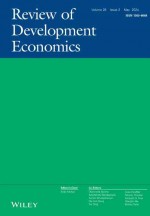N Arinaminpathy and A.R McLean
Journal of the Royal Society Interface vol. 5 no. 22 545-553 DOI: 10.1098/rsif.2007.1152
View Journal Article / Working PaperDisease control programmes for an influenza pandemic will rely initially on the deployment of antiviral drugs such as Tamiflu, until a vaccine becomes available. However, such control programmes may be severely hampered by logistical constraints such as a finite stockpile of drugs and a limit on the distribution rate. We study the effects of such constraints using a compartmental modelling approach. We find that the most aggressive possible antiviral programme minimizes the final epidemic size, even if this should lead to premature stockpile run-out. Moreover, if the basic reproductive number R0 is not too high, such a policy can avoid run-out altogether. However, where run-out would occur, such benefits must be weighed against the possibility of a higher epidemic peak than if a more conservative policy were followed. Where there is a maximum number of treatment courses that can be dispensed per day, reflecting a manpower limit on antiviral distribution, our results suggest that such a constraint is unlikely to have a significant impact (i.e. increasing the final epidemic size by more than 10%), as long as drug courses sufficient to treat at least 6% of the population can be dispensed per day.




